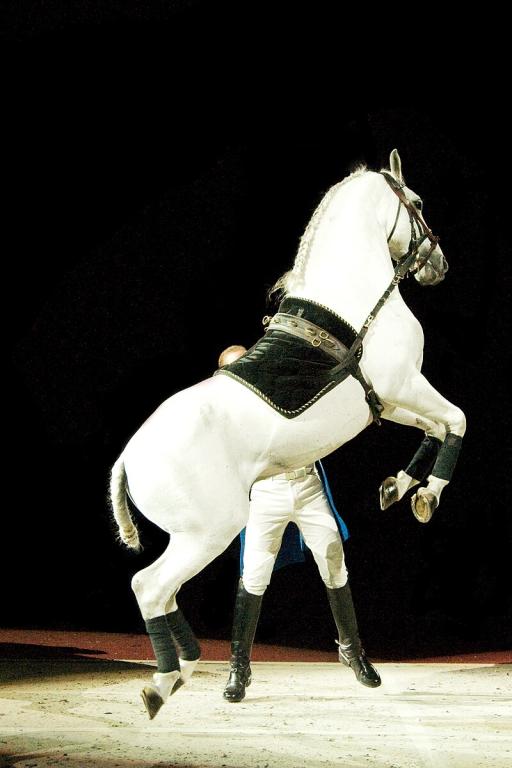
Continent: Europe
Country: Slovenia
Weight: 450 – 600 kg
Height: 155 – 165 cm
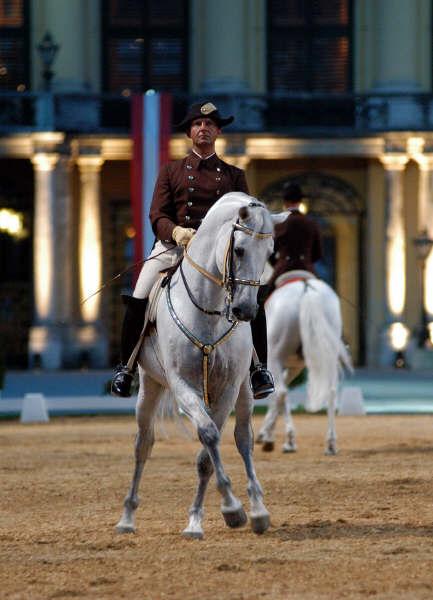
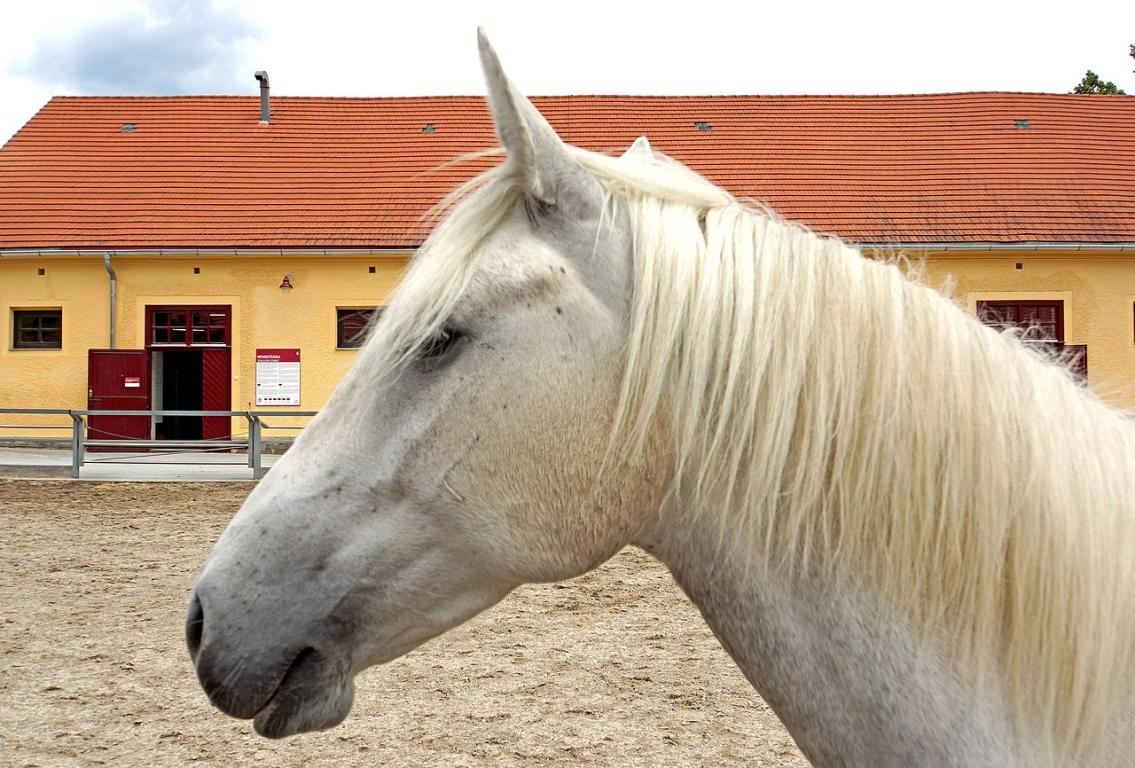
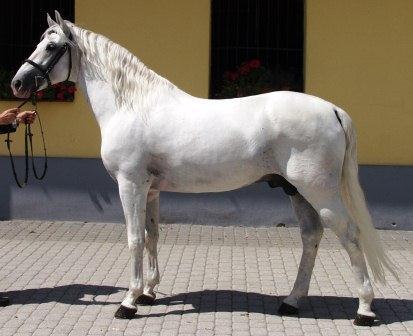
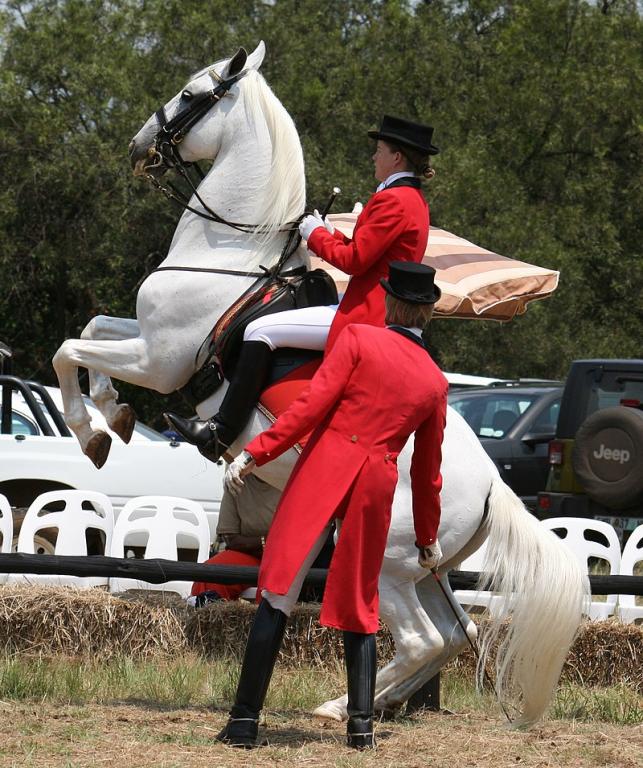
The Lipizzan is a horse breed created in 1580 at the Lipica stud farm, founded by Archduke Charles II of Austria (House of Habsburg).
Bred from a mix of Andalusian, Neapolitan, and local Eastern Alpine horses, the Lipizzan was designed for the imperial court of Vienna, especially for high school classical riding.
Its breeding was structured around eight paternal stallion lines and well-defined mare families, later exported to various stud farms across Central Europe. The breed’s morphology and artistic aptitude were deeply influenced by Spanish breeding, Andalusian heritage, and Baroque Renaissance ideals.
Today, Lipizzans are bred in several European countries, especially in Austria, Slovenia, Hungary, Croatia, and France, with officially recognized stud-books.
The Lipizzan is primarily bred in Central Europe, in regions historically linked to the Austro-Hungarian Empire. Its original birthplace is the Lipica Stud Farm in Slovenia, founded in 1580, which remains today a world-renowned breeding center.
In Austria, the Piber Stud Farm is responsible for breeding the horses used by the Spanish Riding School of Vienna. Major breeding programs are also established in Hungary (Szilvásvárad), Croatia (Đakovo and Lipik), Slovakia (Topoľčianky), and northern Italy (Friuli region).
In France, the Lipizzan has been officially recognized by a national stud-book since 2018 and is bred in various regions, especially for classical dressage, equestrian shows, and genetic conservation. These breeding areas actively contribute to the preservation of the breed’s traditional bloodlines.
The Lipizzan is one of the oldest selectively bred horse breeds still in existence, with a documented genealogy tracing back over 400 years.
Its closed stud-book, its eight classical paternal lines (Pluto, Maestoso, Favory, Neapolitano, Siglavy, Conversano, Tulipan, Incitato), and its well-documented mare families make it a unique genetic heritage in the equine world.
Its genetic value is based on several key aspects:
- Exceptional morphological consistency, maintained through strict selective breeding
-Preservation of rare baroque traits, such as an arched neck, elevated gaits, and compact conformation
-A stable, intelligent, and cooperative temperament, highly sought after in breeding
-The ability to transmit functional qualities for both carriage driving and high-school dressage
-The conservation of pure lines, valuable for research into genetic diversity in horse breeding
The Lipizzan is frequently used as a genetic reference in research on baroque horses and plays a key role in conservation programs across Europe.
The Lipizzan is one of the oldest horse breeds in Europe, with origins dating back to 1580, the year the Lipica Stud Farm (in present-day Slovenia) was founded by Archduke Charles II of Habsburg. The goal was to create a noble, powerful, and elegant horse, intended for court carriages and imperial riding schools, especially for classical high-school dressage.
The breed was developed through selective crossbreeding of Andalusian, Neapolitan, Oriental, and Karst region horses. Over time, the breeding was structured around six, then eight classical stallion lines (Pluto, Maestoso, Favory, Neapolitano, Siglavy, Conversano, Tulipan, Incitato), while the mare families were strictly recorded.
For centuries, Lipizzans were bred in various stud farms of the Austro-Hungarian Empire (including Piber, Szilvásvárad, Topoľčianky...), surviving wars and forced relocations thanks to rigorous conservation efforts.
The breed is best known to the public through its performances at the Spanish Riding School of Vienna, where Lipizzans perform the classic figures of academic dressage. Today, the breed is protected by coordinated international stud-books (including the IFCE in France), and it continues to embody the excellence of baroque horsemanship.
The Lipizzan is renowned for its exceptional temperament, combining intelligence, sensitivity, and discipline. Proud yet cooperative, this horse shows a strong willingness to please, making it an ideal partner for demanding disciplines such as high-school dressage. It also possesses an excellent memory and a remarkable ability to learn, allowing it to master complex exercises with patience and consistency.
Despite its noble appearance and majestic presence, the Lipizzan is often described as a gentle, calm, and well-balanced horse, with a strong connection to humans. It forms deep bonds with its rider and adapts well to various environments, including performances, riding schools, and equine-assisted therapies.
This combination of mental resilience, physical robustness, and emotional stability contributes significantly to the breed’s longevity and versatility.
The future of the Lipizzan breed is closely tied to the promotion of its genetic heritage and its continued role in classical dressage and equestrian performance arts. Thanks to its iconic image, notably associated with the Spanish Riding School of Vienna, the breed enjoys growing international recognition, particularly through cultural and tourism-related initiatives. There is also increasing demand for more versatile uses, such as equine-assisted therapy, leisure driving, and artistic disciplines.
At the same time, European conservation programs for endangered or heritage breeds are actively supporting the preservation of the Lipizzan, considered a culturally valuable heritage breed. Efforts are underway to diversify bloodlines while avoiding inbreeding, through collaboration between national stud farms.
The future of the Lipizzan appears promising, provided that strict selective breeding is maintained, knowledge is widely shared, and breeders are supported in facing modern economic and environmental challenges.
The Lipizzan is generally a robust breed, known for its remarkable longevity and good resistance to disease. Thanks to rigorous selection and the preservation of well-documented bloodlines, major genetic disorders are rare.
However, like all breeds with a closed stud-book, the Lipizzan can be subject to moderate inbreeding, which requires careful breeding management to preserve genetic diversity.
Clinically, no serious hereditary disorders are officially associated with the breed. As with other horses, older individuals may develop joint issues (such as arthritis) related to age.
Reputable breeders — particularly in France and within state stud farms — enforce strict veterinary controls (including genetic identification, equine viral arteritis testing, and fertility screening) to ensure the sanitary quality of breeding stock.
A slow, majestic walk with cadenced steps, marked by a pronounced knee lift and proud neck carriage. It demonstrates the horse’s mental discipline and ability to maintain balance and tension without haste.
A two-beat trot with strong engagement of the hindquarters, marked knee flexion, and a harmonious body posture, typical of high-school dressage. This gait gives an impression of suspension and natural elegance.
A very cadenced and contained canter, with deep engagement of the hindquarters. It is often used in transitions and showcases control and precision.
The horse rears at an angle of about 30° from the ground, hind legs bent, maintaining perfect balance.
A levade followed by a series of small jumps forward. The hind legs propel the horse while the forelegs remain tucked.
A jump into the air where the horse kicks out with its hind legs before landing. A very rare figure requiring strength and precision.
An extended walk where the horse lifts its forelegs very high in alternation. This is not a natural gait, but a classical dressage movement.
A trot in place, very rhythmic and cadenced, with vertical impulsion.
A very slow, suspended, and elegant trot with pronounced elevation of the limbs and maximum body tension.
Born on 06/01/1979
The oldest registered Lipizzan stallion under the Lipizzan International Federation (LIF). Often called the “Levader of the century”, he was known for his intelligence, strong character, and remarkable aptitude.
Born on 01/01/1997
A Grand Prix performer, he became a film and show star, notably in "Shadow & Me". Retired in 2017 at the age of 20.
Born on 01/01/1989
A state stud stallion, appreciated for his conformation and sporting qualities.
Born on 01/01/1981
An important broodmare, she became a notable figure in the Conversano lineage.

Lipica is the birthplace of the Lipizzaner family and home to the largest Lipizzaner stud farm in the world. Experience this in the company of over 300 white Lipizzaners on over 300 hectares of greenery.